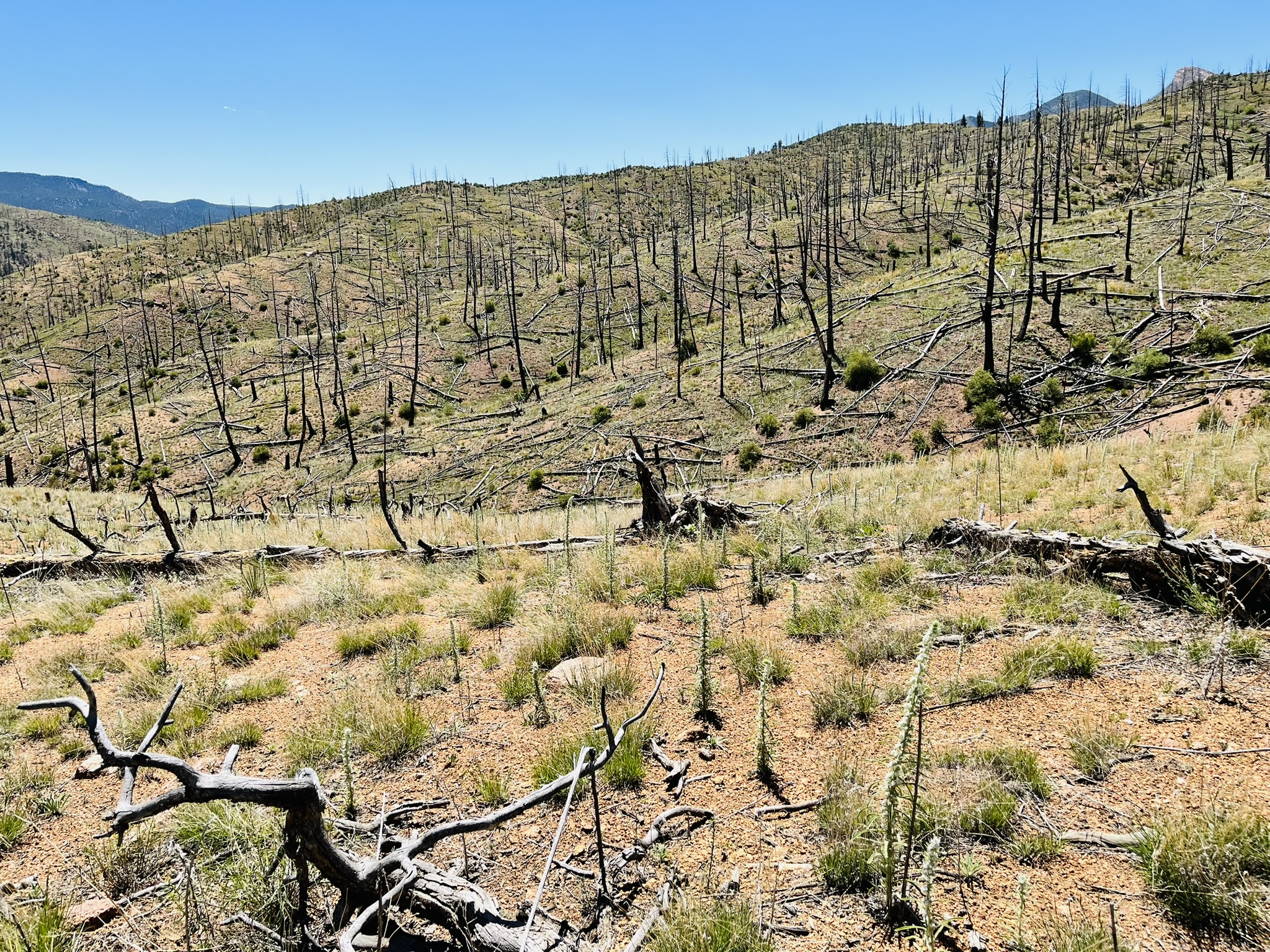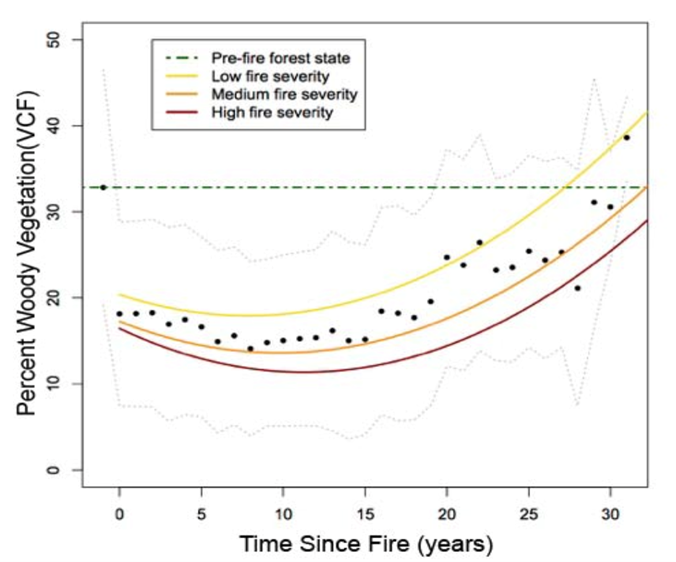Post-fire carbon recovery across scales

Forests store a significant portion of Earth’s carbon. Coniferous forests alone account for nearly one-third of global terrestrial carbon stocks! This carbon sink is threatened by increasingly large, severe wildfires in the Western U.S. The Balch Fire Lab explores how aboveground biomass (AGB), a metric of forest carbon stores, recovers after wildfire, and how recovery varies with fire size, severity, drought, and forest type.
Using ground-based field inventories, uncrewed aerial systems (UAS, i.e., “drones”), and satellite imagery (GEDI) data, the project scales tree-level carbon estimates to entire landscapes and models how forest carbon recovery unfolds over decadal time scales. We also are working to train the next generation of Earth analysts through open-access teaching tools and a Forest Carbon Codefest focused on collaborative science.
